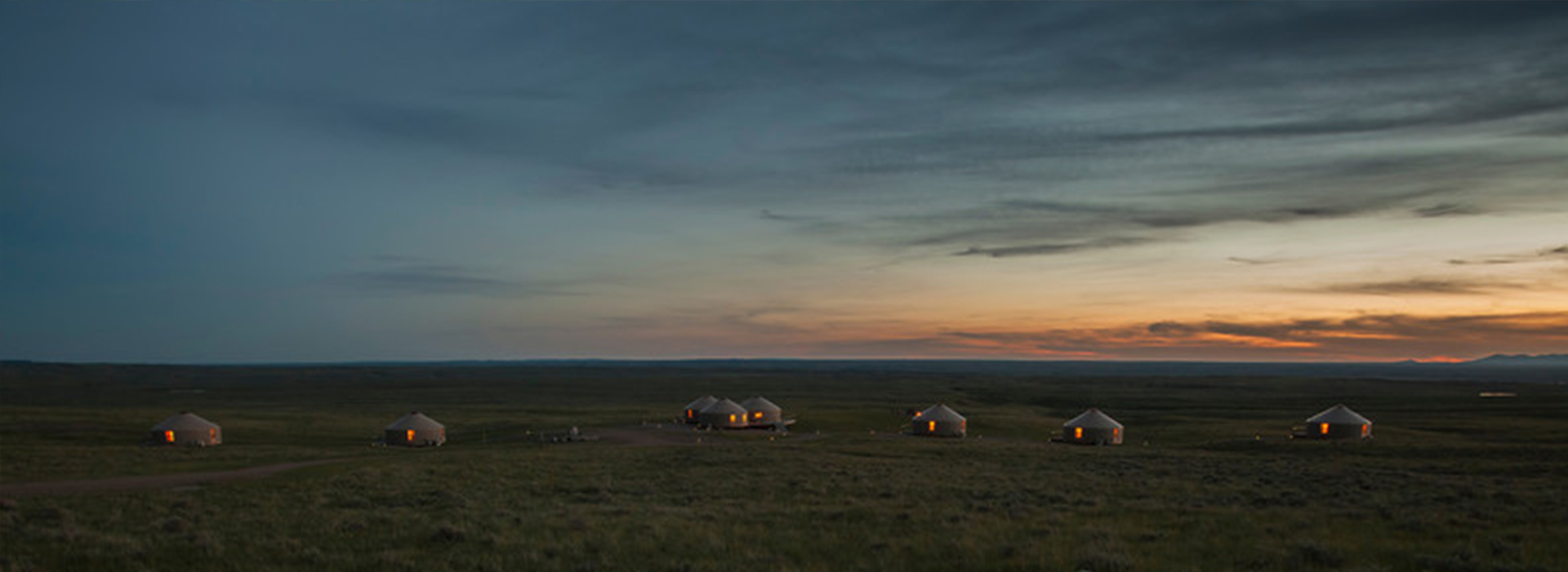One of the greatest things about yurts is that they can have a very small footprint, and get put onto sites that you would never consider putting a house. Some of this is due to the platform construction, which can be very simple. Yurts can also blend in well to the surroundings due to the pleasing rounded shape, and by choosing fabric colors that match the environment.
Much of your potential yurt site is determined by what kind of amenities you desire, and what limitations are in place at the site. This post will give you an idea about what to consider and look for when planning your building site and yurt set up.
Yurt Site Selection
This is a subject that will be explored in greater detail in later posts. In general, you are looking for a cleared, mostly flat spot that will allow you to:
- Bring in utilities you need
- Construct your platform and potential deck
- Has an adequate parking area (you’ll be bringing in a lot of materials)
- Conforms to limitations (is there an easement you have to avoid, or close to the standpipe for H20)
***The ideal yurt site has morning sun, and afternoon shade, to maximize natural heating/cooling.
Additional Considerations & Tips For Selecting a Yurt Site:
Utilities: If you are at a site with existing utilities, you will need to have them located first, so you can plan this part of the infrastructure. To save on these big expenses such as well/water lines, electricity drops, propane lines, etc. you will want to keep the yurt site as close to these utilities as possible. This does not apply if you are going off grid, with the exception of water. We know plenty of people who have hauled water from local streams, or a water source down the road. Yes, it can be done, but it gets old. Hauling in water is best used in occasional yurt uses such as vacation or hunting.
Other: Having privacy is always weighed with convenience. Being at the end of your road, 3/4 of a mile in can be great for the nerves, and quiet but in snow country, your private drive becomes an expensive cost with plowing, maintenance, and a possible safety hazard if you have health concerns that require easy emergency service access.
Platform &/or additional decking. Flat sites are easiest. We have seen them canted out over hillsides, and at the top of peaks. The amount of time and labor are weighed against potential views. Keep in mind if you go cutting down timber for views, or fire danger you are changing your micro-climate at your site. Trees cut wind gusts, noise, provide soil protection, privacy and help retain heat. Building your yurt on the top of the mountain gives you amazing views but leaves you exposed to the worst wind and sun.
The details of your actual platform construction will also be affected by your soil type. Rocky soils drain well, but can be very hard to dig, especially if you have boulders. Clay soils will retain moisture, and could affect a perk test. Sandy soils may drain well and dig well but are prone to shifting and can be considered unstable. Consulting a septic, soil, or building professional in your area can save you some time. If you are interested you can do a soil test yourself, to get a sense of what the soil composition is. Most Engineers plan for the worst which would be sandy/shifty soil = 1500 # per sq. foot? If you have different soil, you can get your soil analyzed by a lab.
Other: Your soil can really affect drainage. This could affect your perk test, a buried pressure tank, or whether your planned parking lot is really a swamp waiting to happen. Results from observation or testing my influence whether and how much fill or road material needs to be brought in. One reason it is great to observe the site over time is to see where the water flows. If you can’t do this, researching using the Web Soil Survey, performing a simple soil.
Your site’s frost line can also impact your foundation work. Besides having to have water utilities ran under the frost line (6 feet here in Montana), you may have to pour footer walls deeper than your frost line to avoid frost heaving of your decking.
Lastly, you may want to test your land’s soil to pick the best garden spot! Those humps of dirt covered in grass could be old tree stumps, or a treasure chest of soil from a previous garden. One other way that you can map areas of moisture or low drainage is to look at plants growing in the area. Cedars, ferns, alders, cottonwoods, and birch all thrive in high water table areas. Meanwhile Ponderosa, larch and pines like medium moisture, and junipers and knapweed can all indicate dry conditions.
For more detailed information you can learn how to use web soil survey and discover the soils best for building.
Once you have your yurt site selected, it’s time to create a yurt building site map.
If you’re excited about finding yurts for sale or starting the journey of building your dream yurt with upfront knowledge of the yurt cost, you’ve landed in the right spot! Learn more about our unique, handcrafted yurts today.

